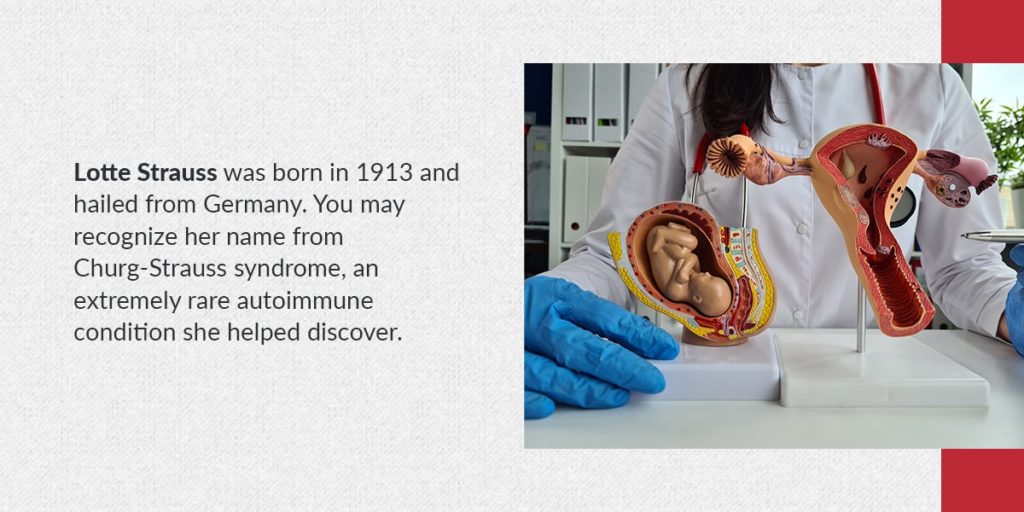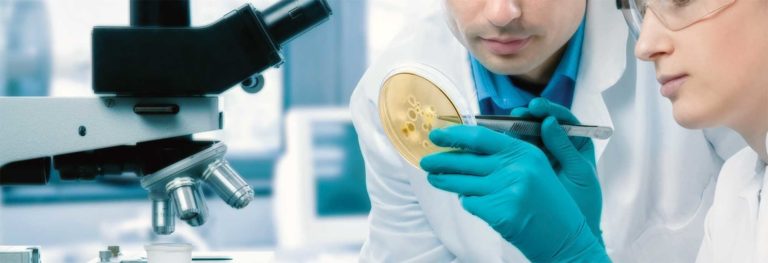Celebrating the Women Behind Pathology
Women have played pivotal roles in making the field of histology what it is today. Women professionals make up about half the field — an impressive feat in science, technology, engineering and mathematics (STEM).
The pioneering women of pathology have helped to identify diseases, create hypotheses and explore the very nature of cell behavior. Let’s take a look at some of the women leaders in pathology and their groundbreaking accomplishments.
Maud Menten
We’ll kick things off with Maud Leonora Menten, who started her career in the early 1910s as one of the first Canadian women to earn a medical doctorate. Unfortunately, women weren’t allowed to participate in research there, so she left for Berlin, where she co-authored a paper on enzyme kinetics with Leonor Michaelis. They explored the relationship between enzyme-substrate concentration and reaction rate, giving us the all-important Michaelis-Menten equation.
Menten then left Germany to attend graduate school at the University of Chicago and later teach at the University of Pittsburgh. Some of her contributions included:
- Inventing the azo-dye coupling reaction, which is still used today to identify abnormal kidney and liver function
- Characterizing several bacterial strains, including salmonella and Streptococcus Scalatina, leading to a scarlet fever immunization program
- Conducting the first electrophoretic separation of blood hemoglobin proteins
In 1998, Menten was posthumously inducted into the Canadian Medical Hall of Fame, which now introduces her as “a force to be reckoned with.”
Myrtelle May Canavan
Myrtelle May Canavan was born around the same time as Menten and had a similarly innovative presence in the field, with a focus on neuropathology. She earned her medical doctorate in 1905 from the Woman’s College of Pennsylvania. At that time, pathology didn’t yet involve routinely tracking the course of disease through tissue samples, but Canavan wanted to understand how brain and nervous system damage would affect the body and mind.
She started out by exploring bacterial invasions of blood and cerebrospinal fluid and examining various disease pathologies. She was especially interested in defects of the brain, leading to her most famous accomplishment in 1931, a case study that described what is now known as Canavan’s Disease. In this degenerative disorder, a lack of enzymes causes white matter in the brain to deteriorate. Canavan was the first person to identify the disease pattern.
Sophie Spitz
Another American-born pathologist, Sophi Spitz, is the namesake of Spitz nevi, benign lesions that look quite similar to melanoma. They were initially called “juvenile melanoma,” and Spitz’s work played a major role in differentiating these benign lesions from melanoma and avoiding misdiagnoses. Spitz was also ahead of her time in advocating for pap smears when they were mostly rejected by the medical community.

Lotte Strauss
Lotte Strauss was born in 1913 and hailed from Germany. You may recognize her name from Churg-Strauss syndrome, an extremely rare autoimmune condition she helped discover. Strauss was a founding member of the Society for Pediatric Pathology and the first pediatric pathologist at Mount Sinai Hospital in New York. Her research also contributed to our understanding of fetal development pathology.
Elizabeth Stern
Like Menten, Elizabeth Stern started out in Canada, earning her medical degree from the University of Toronto in 1939. From there, she became a citizen of the United States and a pioneering specialist in cytopathology. She was especially interested in cell progression and focused on cervical cancer. Her achievements included:
- Publishing one of the first case reports linking a specific virus to a specific cancer with herpes simplex and cervical cancer
- Being the first person to report a definite link between prolonged use of oral contraceptives and cervical cancer
- Identifying 250 distinct stages of cell progression leading up to advanced stages of cervical cancer
Cervical cancer has a slow rate of metastasis, and Stern’s work led to instruments and diagnostic techniques that have drastically changed the nature of cervical cancer treatment. Now, it’s one of the few types that can be successfully treated through prophylactic measures.
Maria Magdalena Dąbska
Maria Magdalena Dąbska, born in Poland in 1921, was a member of the Home Army in Warsaw, a resistance group fighting against the Nazi forces in 1944. She was eventually captured and sent to a German internment camp, but she ultimately survived the war. Afterward, Dąbska returned to Poland and started a career in pathology. She specialized in oncological histopathology and earned international acclaim for her work on the Dąbska tumor, named after her.
Elaine Jaffe
After earning her medical doctorate in 1969 from the University of Pennsylvania, Elaine Jaffe embarked on a prolific pathology career. She currently heads the hematopathology section of the National Cancer Institute’s Laboratory of Pathology and has been the President of the Society of Hematopathology. She was named a National Health Institute (NHI) Distinguished Investigator, amidst a long list of other distinctions.
Jaffe’s work focuses primarily on the origin of lymphomas, and her team explored the difference between B-cell and T-cell lymphomas. This work led to international change, including the implementation of the World Health Organization’s Revised European-American Classification of Lymphoid Neoplasms (REAL). She continues to work in pathology, with current research that involves genetic and epigenetic studies on Hodgkin’s lymphoma cells.
Kathleen Coard
Born in Grenada in 1952, Kathleen Coard became best known for her work in cardiovascular diseases, soft tissue tumors and prostate cancer. She was the first female professor of pathology in the Caribbean, with many publications and accolades to her name. Coard has been a significant figure in medical research in Jamaica and the Caribbean, with notable contributions to understanding potential risk factors and genetic associations for cancer in men of African descent. She has also researched perinatal mortality.
Tracey McNamara
Back in 1999, Tracey McNamara played a vital role in responding to the outbreak of the West Nile Virus. At the time, she was the lead pathologist at the Bronx Zoo and had begun investigating the number of dead crows that had appeared outside the zoo. Since her samples came from crows, the Centers for Disease Control (CDC) initially rebuffed her findings, as they were focused on human impacts. McNamara took her findings to the U.S. Army, which helped establish the connection between the animal and human cases.
McNamara worked to bridge gaps in our disease monitoring practices and raise awareness of the biosecurity risk presented by animals. Thanks to her, we now better understand these risks and what monitoring animal disease patterns can tell us about human health.
Sharon Weiss
Sharon Weiss was a trailblazer in anatomic pathology. She was the first woman to be Chief Resident at Johns Hopkins School of Medicine and later co-authored the iconic textbook “Soft Tissue Tumors.” She’s held various leadership positions and provided the first descriptions of many different entities, such as epithelioid hemangioendothelioma and giant cell fibroblastoma.
Honoring the History of Women in Pathology
Women pathologists have made radical changes in the field of pathology. Without them, we might be decades behind in our current understanding of different diseases and processes. Whether they were combating the limitations of their time or conducting groundbreaking research, there’s no debate that these women have shaped the industry, and we at Histologyequipment.com salute them.
We know breaking barriers in STEM isn’t easy. To help, we offer affordable and reliable histology equipment solutions, so pathologists can continue this important work. Explore our new, used and refurbished equipment today to learn more!








